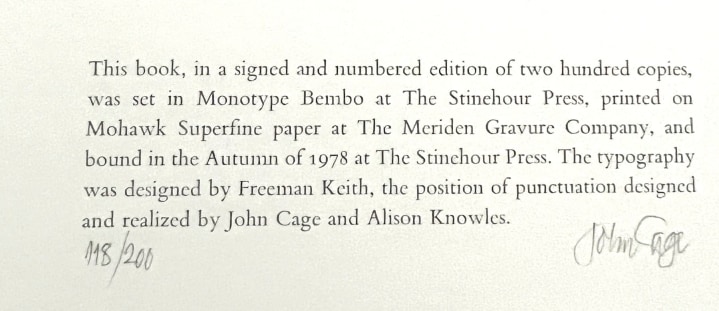1978
Cloth boards in a slipcase, black and white text throughout, English. SIGNED by Cage on the limitation page. Number 118 out of a limited edition of 200 copies. New York: Printed Editions
11 1/4h x 9 3/4w x 1d in (28.58h x 24.77w x 2.54d cm)
$ 650
Inquire



